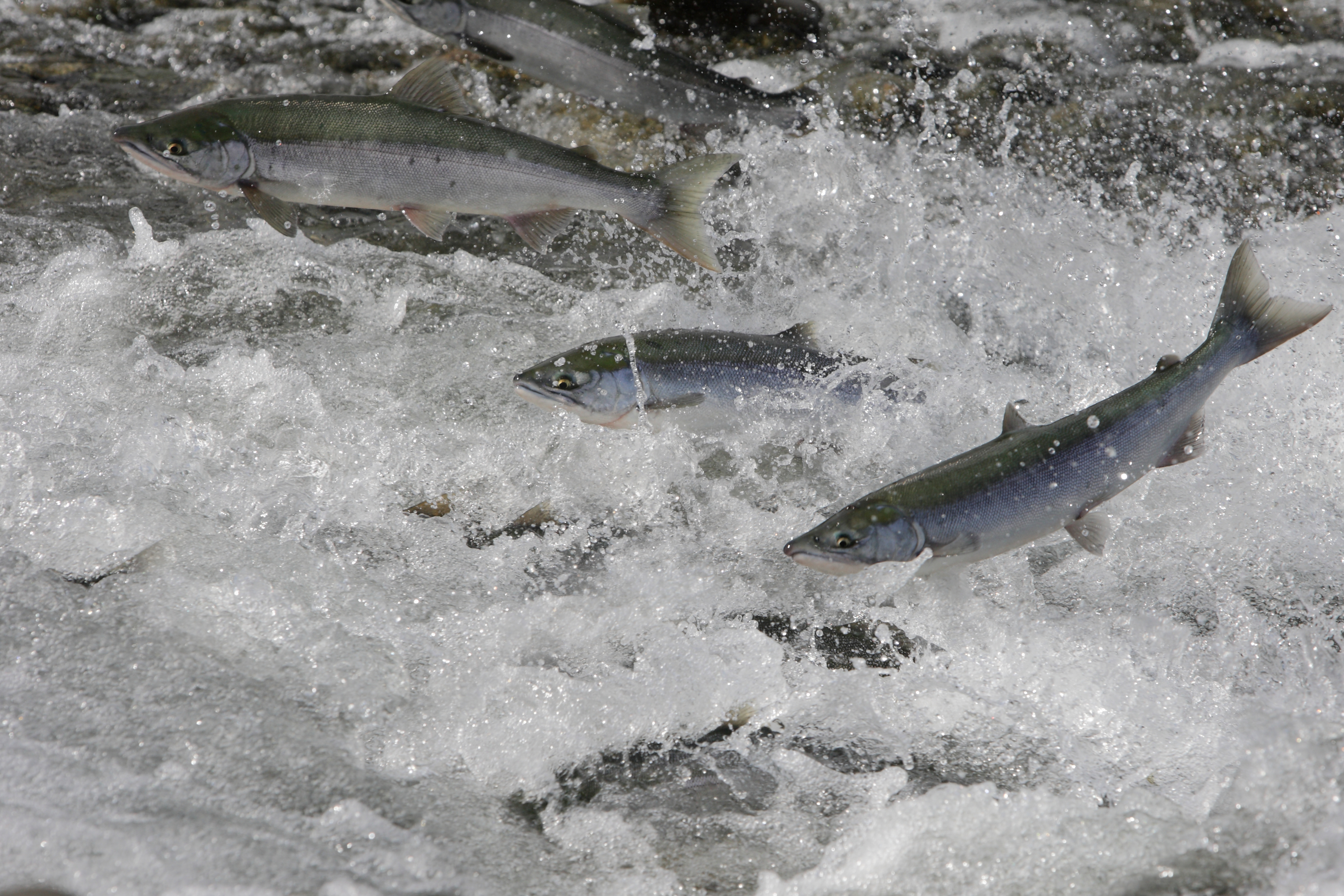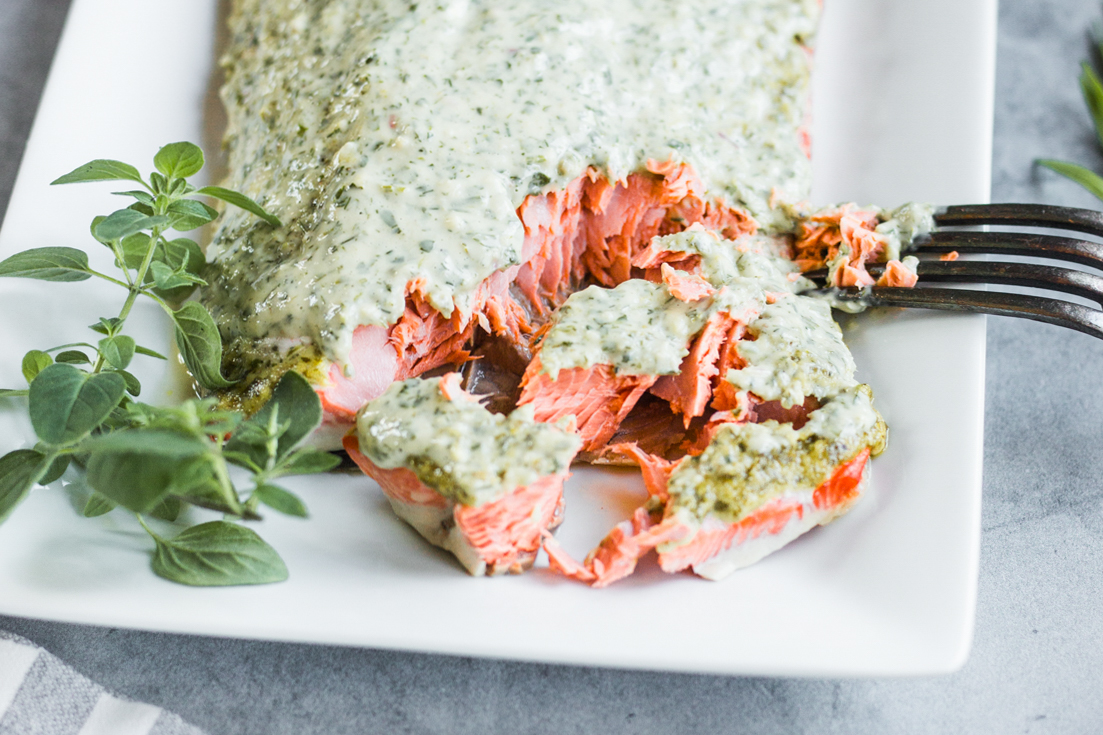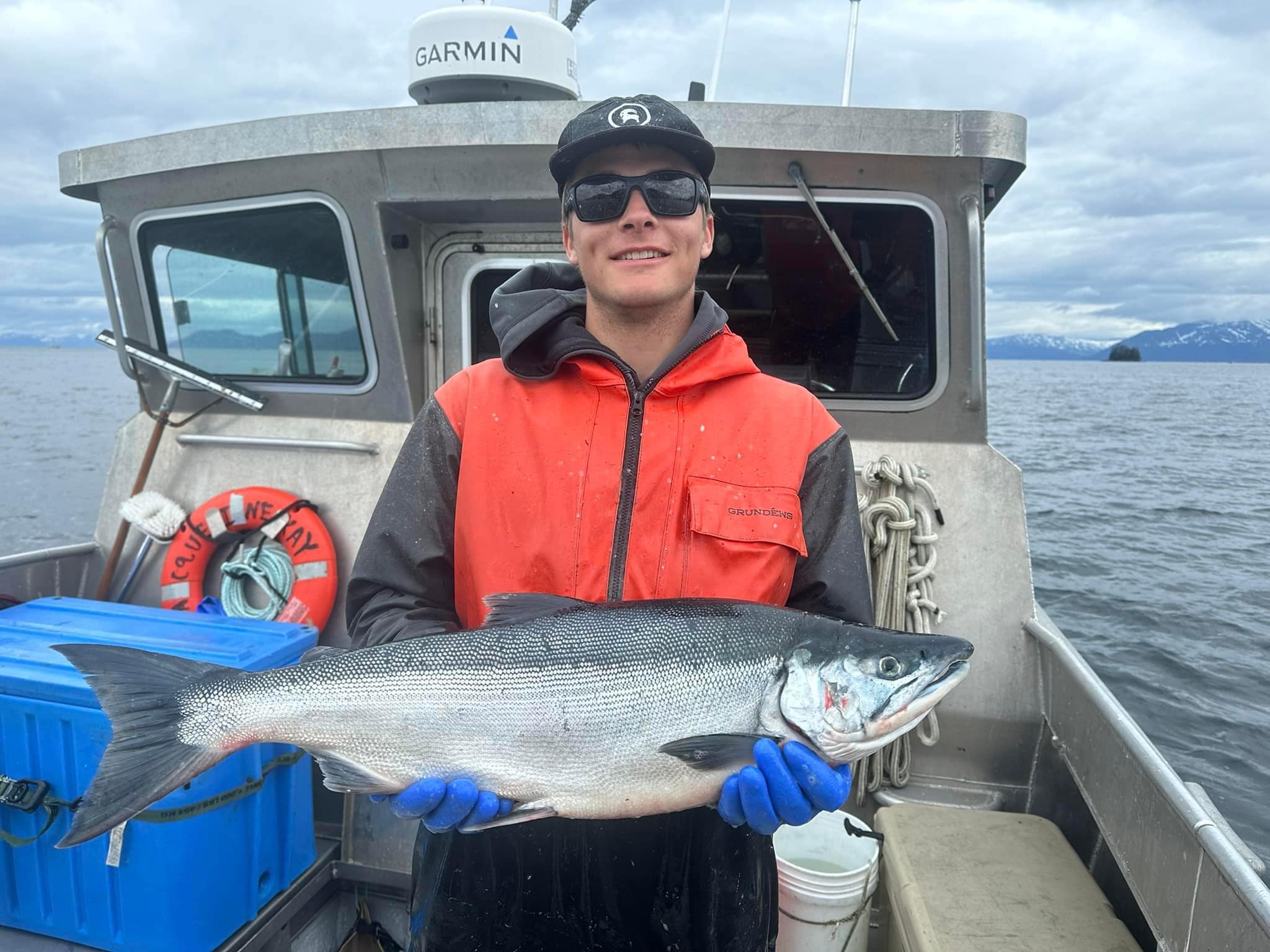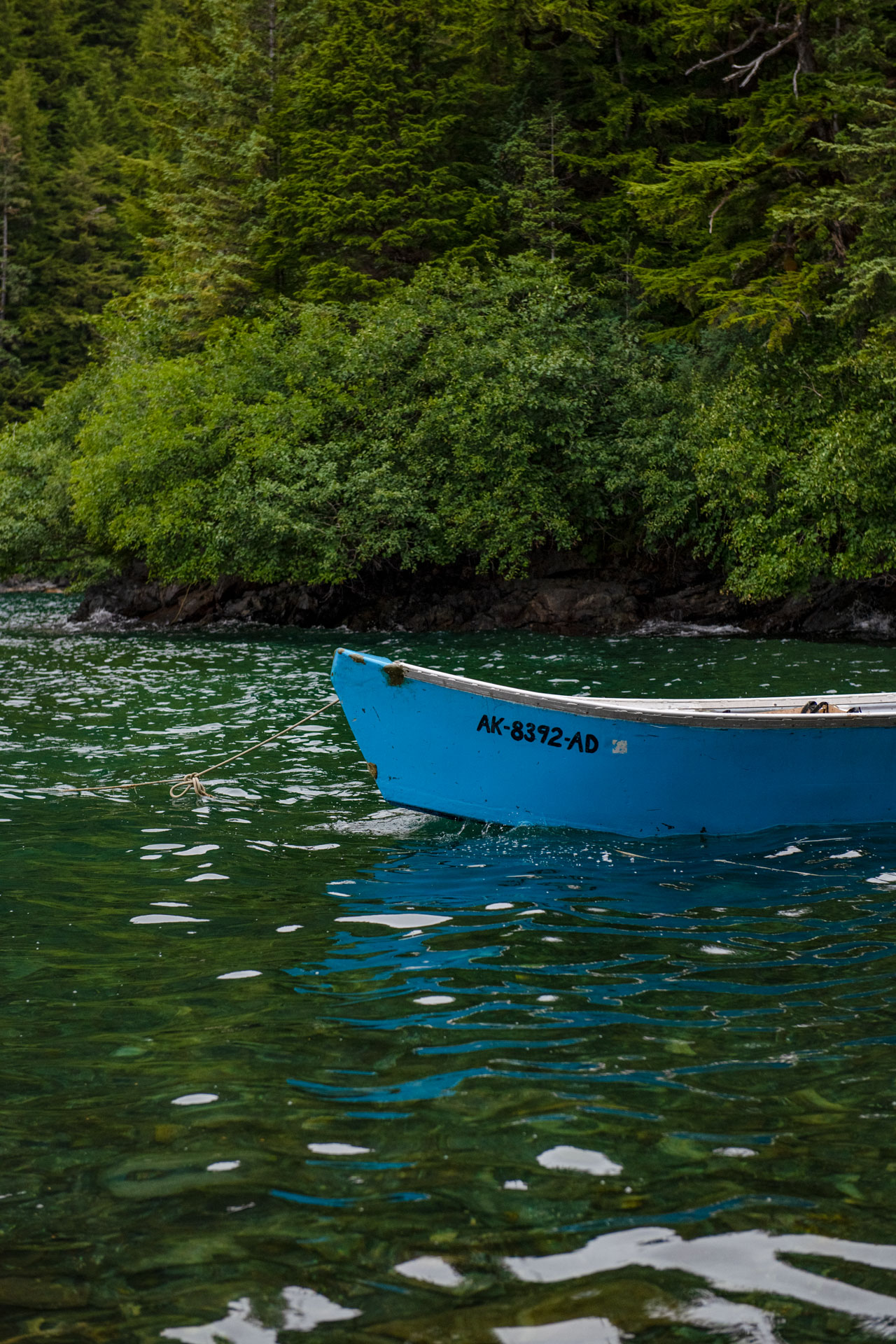By using our website, you agree to the use of cookies as described in our Cookie Policy
Fish for Families
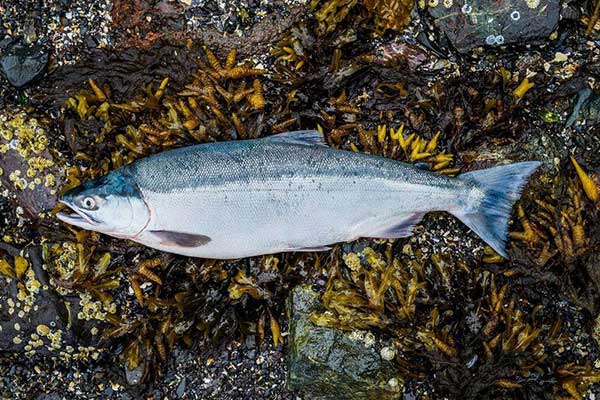
Fish for Families
Do you have a growing person in your family? Or maybe you’re growing a person? Have you ever felt overwhelmed by all the nutrition information out there? It can feel like a part time job researching how to best feed your body, creating grocery lists, shopping and preparing food, especially if you are caring for a family.
This is where some timeless advice comes in handy: Keep it simple. Food created by nature, from wild and natural sources, feeds our body exactly as it is intended to be fed. Some of the best food for our bodies can be sourced straight from where it has always come long before humans were eating it. While there are many foods that fit these criteria, today we’ll talk about just one.
You’ve probably already heard that wild Alaskan salmon are highly nutritious. They pack a range of micro and macronutrients that are beneficial -and many essential- to our bodies. Have you ever wondered why they evolved to be such an absolute nutritional powerhouse? The answer lies in their role in the wild food web.
While wild salmon are ubiquitous in Alaskan waters, they are also unique because they are anadromous. This means they live part of their life cycle in freshwater and part in salt water. Though it’s slightly different between species, Pacific salmon follow the same life cycle pattern: they hatch from eggs in fresh water, leave the freshwater system as juveniles, spend most of their adult lives in the ocean where they pack on over 95% of their body weight (1), and return to their natal stream to spawn and subsequently die. This means salmon are essential nutrient transporters to the terrestrial ecosystem in which they spawn.
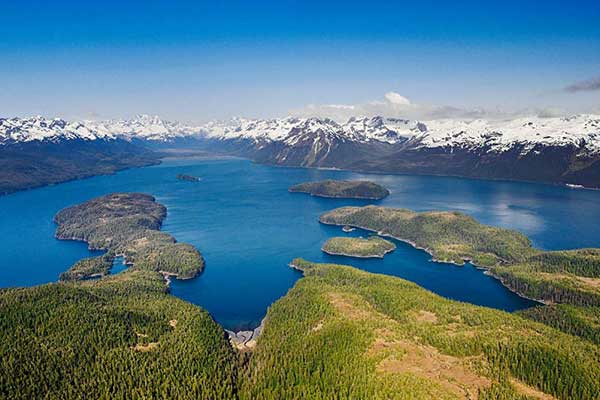
The majority of a salmon’s growth happens in the ocean, and it begins with plankton. In Prince William Sound, baby sockeye, keta, coho and pink salmon swim out into the ocean in the spring right when a major event is happening. It’s called a plankton bloom and it creates a necessary food source for these fish. Rapidly multiplying phytoplankton stimulated by the spring sunlight create a population explosion in zooplankton, which is a broad term that encompasses basically any floating small animal. Plankton are diverse and prolific, and contain oceanic minerals made available by tumultuous winter storms churning up the Alaskan waters. They are the perfect food for growing salmon, which grow large enough to survive in offshore waters before they leave the relative protection of Prince William Sound for the Gulf of Alaska and beyond.
Once out in the ocean, Prince William Sound salmon eat slightly differently depending on their species. Notably, wild sockeye salmon like to eat krill, which gives their meat its famous vibrant color. Coho salmon are voracious predators, eating a variety of small fish including juvenile pink and chum salmon. Salmon store up all they can during their time in the ocean because they stop eating when they return to their natal stream to spawn at the end of their life cycle. The beginning of this journey is the time at which their meat begins to feel firm and their scales are still shiny and lustrous, or “ocean-bright”. They still have their energy stores and all those excellent nutrients they are bringing home from the ocean. This is the perfect time for sustainable harvest by your fisherman.
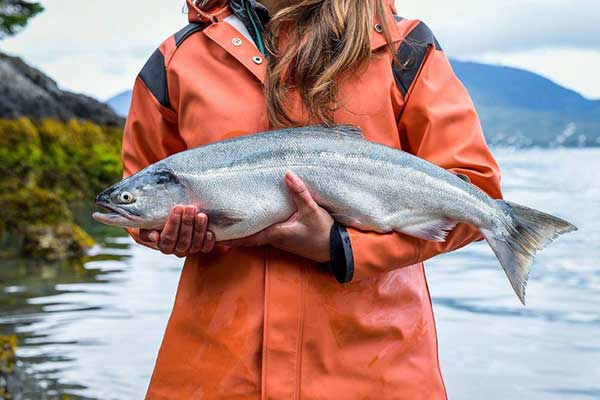
Now that we know why Mother Nature has designed Prince William Sound salmon so perfectly, let’s talk about what makes them this way and why they are good for you. Here are the nutrients in a typical wild Alaska sockeye (red) salmon per 3 oz. serving (2):
Calories: 130
Protein (g): 23
Fat (g): 5
Saturated Fat (g): 1
Sodium (mg): 80
Cholesterol (mg): 50
Omega-3, DHA and EPA (mg): 730
Vitamin B12 (mcg): 3.8
Vitamin A (mcg): 50
Vitamin D (mcg): 14.2
Selenium (mcg): 30
Potassium (mcg): 370
Iron (mg): 0.4
Calcium (mg): 10
Starting from the top- at 130 calories per serving, you almost can’t have too much salmon, especially considering the nutritious punch this food packs. These are the opposite of “empty” calories, so there’s no need to restrict intake due to caloric content. Speaking of restricting intake, it’s important to mention that salmon is a safe seafood for pregnant people to consume. Remember, they are anadromous and have relatively short lifetimes. This means that they do not spend many years in the ocean where mercury accumulation occurs. Current recommendations state that pregnant people can safely consume salmon at least 2-3 times per week (3).
Next up is protein. We could talk about the importance of protein in the diet all day! Proteins are the building blocks of our body, thus it’s critically important for pregnant people and growing people to get adequate amounts of protein. It’s recommended that pregnant people take in between 75 and 100 grams of protein daily. This helps fuel growth of the baby -especially the developing brain- and the pregnant parents’ growing body, including blood volume (4). After birth, we continue to need sufficient protein for growth; from birth to six months, babies need one gram per pound of body weight daily! During this time, all or virtually all the baby’s nutrition is supplied by breastmilk if breastfeeding, so it’s important that the lactating parent continue to consume enough protein as well. Children and adolescents continue to have higher protein requirements than adults; children ages 7-15 years typically need 0.50 grams per pound of body weight, while adults need about 0.36 (5). A serving of Prince William Sound salmon delivers a high amount of protein without the added saturated fat that comes along with most land animal proteins, which we’ll talk about next.
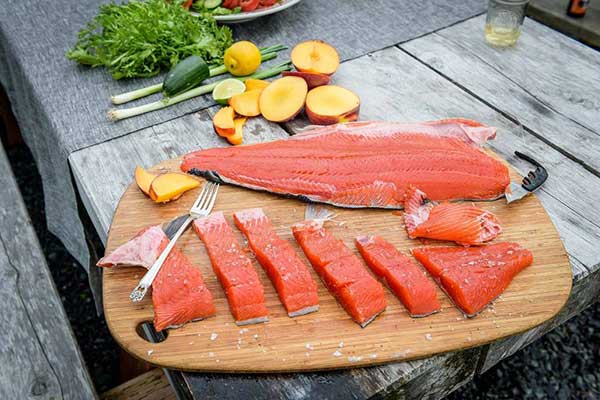
Before we get into fat content, it’s important to know that not all fats are created equal. That’s why the nutrition facts above list “fat” and “saturated fat” separately. To make it easy, you can think of saturated fat as “bad” fat and unsaturated fat as “good” fat. This isn’t to say that you can never eat saturated fat, but as a general dietary guideline, it’s best to choose foods that are higher in unsaturated fats and lower in saturated fats (5). Alaska red salmon is low in saturated fat. Furthermore, the type of fat it does contain is VERY important for fetal development and cannot be sufficiently synthesized in the body. This is DHA Omega-3 fatty acid. It’s an essential element for healthy development of the brain, eye, and other body parts for a fetus (6). DHA is important well beyond gestation. It is recommended that breastfeeding parents consume 100 mg/day during their baby’s first year to support brain development (7). There is not an end-date to the benefit of DHA omega-3; it is an essential fatty acid throughout our lives.
Next, we have sodium. It makes sense that an ocean-bright salmon from the cold waters of Prince William Sound would have some level of sodium content; after all, they’ve spent the past couple years swimming in sodium chloride. It is important to note two things here: 1. Sodium is an essential element for many biological processes, such as neurotransmission and muscle activation. 2. You would have to eat over 28 servings of wild Alaska salmon in a day to exceed the maximum recommended intake for pregnancy of 2,300 mg (8). While it’s important to steer clear of excess salt intake, salmon is unlikely to be a food that contributes significantly to meeting this threshold.
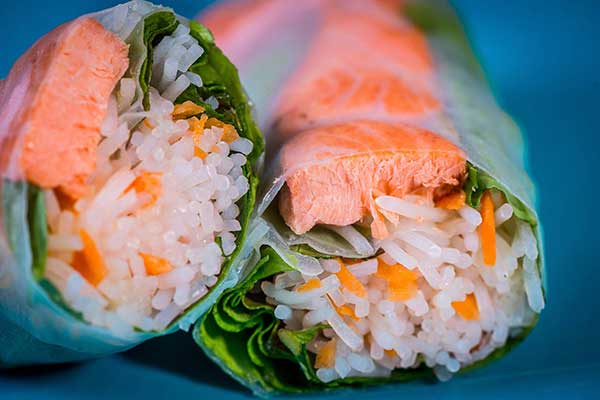
A somewhat similar sentiment can be applied to cholesterol. The recommended daily intake for cholesterol is less than 300 mg per day, so you would have to consume about 10 servings of wild Alaska salmon to meet this level. However, conversely to sodium, we do not actually need cholesterol in our diets and thus there is no minimum recommended intake. Foods with high levels of omega-3 fatty acids promote lower blood fat levels and reduce the risk of blood clots (5). While it’s important to be cautious about consuming too much cholesterol to lessen the risk of heart attack and stroke, salmon is again unlikely to be the greatest offender within an average diet.
Ah, the vitamins. Straight from the source. It’s perhaps a little incredible that nature provides us Northerners a fresh, local source of vitamin D when we often cannot make our own due to lack of sunlight. Not only that, but it’s paired with the perfect oil (omega-3s) to optimize uptake by the body. Vitamin D has been shown to be critical during pregnancy and in babies, children and adults. Interestingly, it’s the only vitamin of which babies need more than adults. Vitamin D helps with absorption of calcium and phosphorus, which are critical in building strong bones (5). And let’s remember here that not all salmon on the market are created equal. At an average of 6.25 mcg per serving, farmed salmon have less than half the vitamin D content of wild salmon (9).
Vitamins A and B12 are also critical to development. Moreover, vitamin B12 can only be found in animal products, making wild salmon a healthy natural source. Vitamin A helps promote healthy vision, skin and teeth, and bolsters the immune system. Vitamin B12 is important for development because it helps build the myelin sheath that insulates nerves and boosts electrical impulses (5).
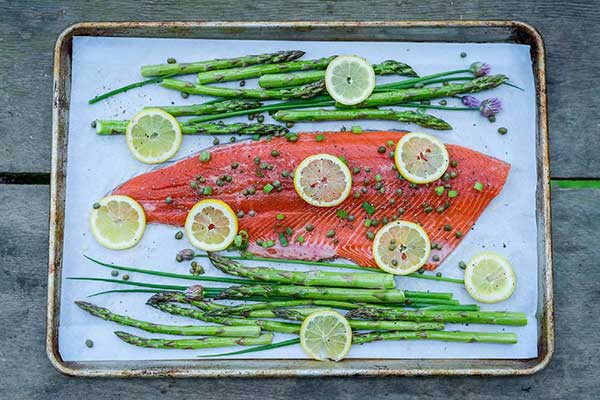
The trace minerals naturally present in wild salmon, iron and selenium, might come in small amounts but they are essential. Selenium plays a role in DNA synthesis, reproductive health and immune system health. Iron also plays a role in growth and development, but it is probably best known for being a building block of the blood. Iron is a part of the protein hemoglobin, which carries oxygen within red blood cells (10). It’s critical for people at all ages, but during pregnancy a person’s blood volume will increase significantly throughout the pregnancy and adequate iron intake is especially critical.
Calcium and potassium are also essential for the body at any age, and although a serving of salmon won’t get you too far in your daily intake, let’s talk about why they are important. You may already know that calcium is important for strong bones, but did you know why it is so easily depleted? Calcium is also an essential element in muscle contraction, and the body cannot function when too little is available. When this happens, the body will degrade its own bone to release calcium into the blood. Potassium contributes to organ function and is important for osmoregulation. Pregnant people in particular benefit from potassium to help with bloating and muscle cramps (10).
The health benefits of Prince William Sound salmon are clearly extensive. Now you can shop smarter knowing exactly why this salmon is touted for its nutrition and have confidence that you are making a great choice for your family. Look for canned Prince William Sound salmon year-round at a retailer near you using our Fish Finder: https://www.copperriversalmon.org/fish-finder.

Sources:
1. Groot, C., and L. Margolis. 1991. Pacific salmon life histories. UBC Press, Vancouver. 564 pp.
2. Alaska Seafood Marketing Institute. 2020. Health & Nutrition. Alaska Seafood. alaskaseafood.org/health-nutrition/
3. U.S. Food and Drug Administration. 2020. Advice about Eating Fish. FDA. fda.gov/food/consumers/advice-about-eating-fish/
4. American Pregnancy Association. 2017. Diet During Pregnancy. American Pregnancy Association. americanpregnancy.org/healthy-pregnancy/pregnancy-health-wellness/diet-during-pregnancy-5475/
5. Sears, W. and M. Sears. 1999. The family nutrition book. Little, Brown and Company. 416 pp.
6. American Pregnancy Association. 2020. Omega-3 Fatty Acids: FAQs. American Pregnancy Association. americanpregnancy.org/healthy-pregnancy/pregnancy-health-wellness/omega-3-fatty-acids-faqs-4922/
7. Jouanne, M., Oddoux, S., Noёl, A., and Voisin-Chiret, A. (2021). Nutrient Requirements during Pregnancy and Lactation. Nutrients. 13(2). 692. Ncbi.nlm.nih.gov/pmc/articles/PMC7926714/
8. Masters, M. 2020. How Much Salt Should You Eat During Pregnancy? What To Expect. whattoexpect.com/pregnancy/salt-in-diet/
9. Lu, Z., Chen, T.C., Zhang, A., Persons, K.S., Kohn, N., Berkowitz, R., Martinello, S., and Holick, M.F. (2007). An Evaluation of the Vitamin D3 Content in Fish: Is The Vitamin D Content Adequate to Satisfy the Dietary Requirement for Vitamin D? The Journal of Steroid Biochemistry and Molecular Biology. 103(3-5). 642-644. ncbi.nlm.nih.gov/pmc/articles/PMC2698592/
10. Sinrich, J. 2020. Pregnancy Nutrition Chart: 33 Essential Nutrients for Pregnant Women. What To Expect. whattoexpect.com/pregnancy/diet/pregnancy-nutrition-chart/
‹ Back


